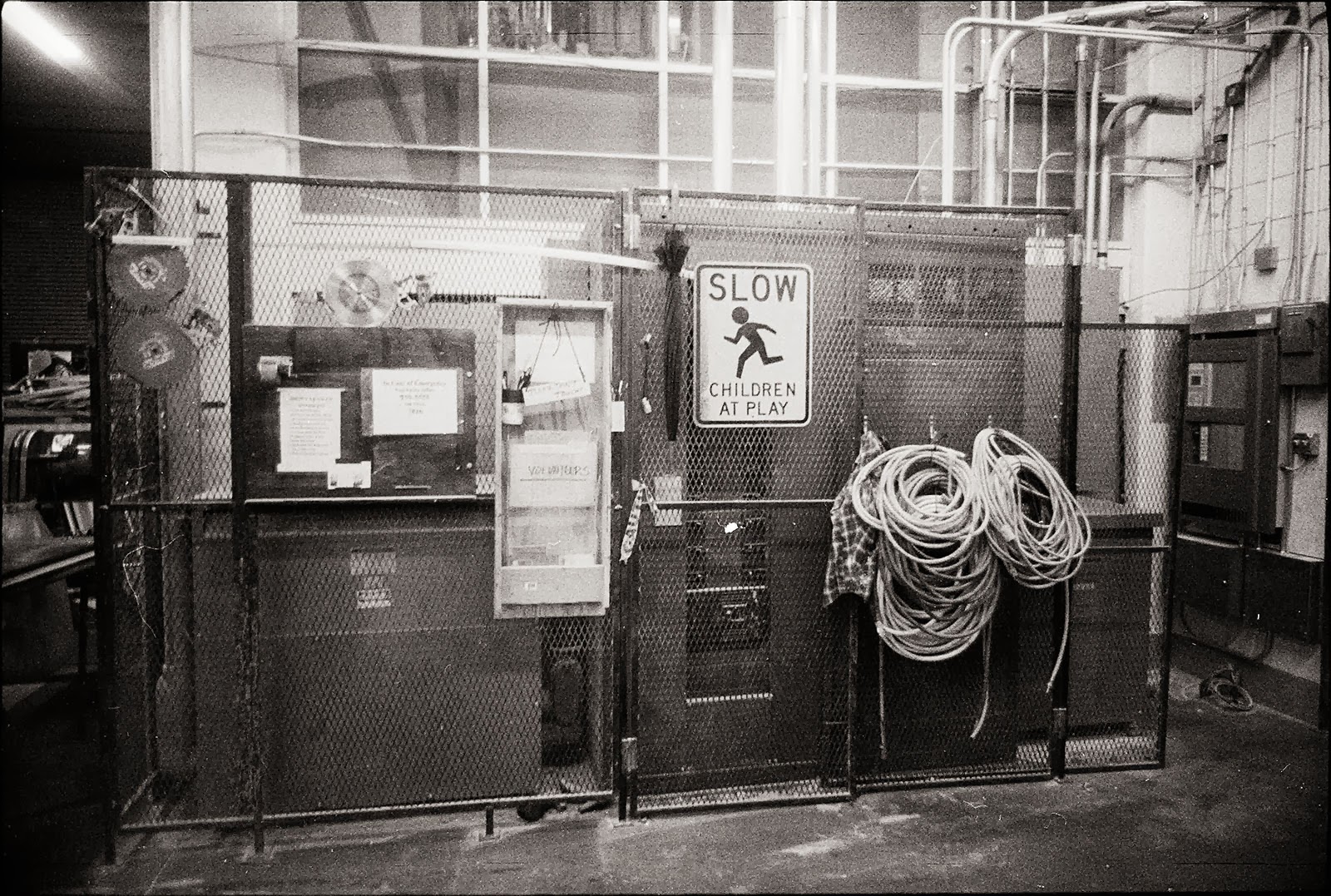I finally got my hands on one of these this month for a price I was willing to pay. I got a pretty good deal since it didn't come with the auxiliary finder - but I already have the Cosina-Voigtlander 25mm f/4 in SC mount and its finder, so I was covered. Plus, I generally can visualize the image based on the 28mm finder built in to the Nikon SP.
 |
| Self-Portrait in Shadow, Leaves - Nikon SP, Nikkor 2.5cm f/4, Kodak Elite Chrome 400 |
VSU Campus Scenes - Nikon SP, Nikkor 2.5cm f/4, HP5+, Acufine
But this design, despite being over 80 years old, is also its raison d'être. The symmetrical design gives superior sharpness and astonishingly low distortion, with little to no chromatic aberrations, which even today is only rivaled by the newest and most expensive lenses. The retrofocus design required for SLR-style cameras is the reason for lenses needing to be so complex to achieve the same level of quality.
 |
| Sunset Cemetery - Bessa R2S, Nikkor 2.5cm f/4, Plus-X, Acufine |
 |
| Sunset Cemetery - Bessa R2S, Nikkor 2.5cm f/4, Plus-X, Acufine |
VSU Campus Scenes - Nikon SP, Nikkor 2.5cm f/4, Kodak Elite Chrome 400
One of the things this lens excels at is flare resistance. Despite not having modern coatings, flare is almost none-existent, even shooting right into the sun. This performance is quite good in comparison with some other optics from this time period.
 |
| Sunset Cemetery at Sunset - Bessa R2S, Nikkor 2.5cm f/4, Plus-X, Acufine |
One thing to note when considering this lens - it has no focus ring. The lens is focused solely by the razor-wheel on the top plate of the camera. This is a bit of a pain, but not a huge issue for me - but for others it might be a deal-breaker. The aperture is set inside the front barrel, near the glass. I have read that the aperture leaves are very thin paper, so do be careful changing the aperture - do it slowly! The lens also sadly has no filter threads, but instead supposedly uses Series VII filters. I don't have a VII adapter on hand so I have yet to try that - but considering the vignetting, I think filters might be impossible to use. Disappointing, as I like to use yellow, orange, and other filters.
 |
| Scene Shop - Nikon SP, Nikkor 2.5cm f/4, HP5+, Acufine |
This lens is the second widest lens in the native S-mount system, with only the even rarer 2.1cm f/4 Nikkor and Cosina-Voigtlander 21mm f/4 lenses being wider. If you are looking for a super-wide angle for your Nikkor rangefinder, this is a great choice. However, one can generally find a 2.8cm f/3.5 lens for about half the price. I have also recently purchased one of these to test, which I will discuss at a later date - but if you like wide-angles, this 2.5cm lens will not disappoint. It also pairs well with 3.5cm and/or 5cm lenses.
Despite some of its flaws, it is definitely a stellar lens and I am quite happy to have it in my lineup. I'll finish up this review with one more image from Sunset Cemetery:
 |
| Strickland Facing the Mill - Bessa R2S, Nikkor 2.5cm f/4, Plus-X, Acufine |




I found your this post while searching for some related information on blog search...Its a good post..keep posting and update the information buy dvd last man standing season 6
ReplyDeleteThanks for the blog post buddy! Keep them coming... buy dvd tyrant season 2
ReplyDelete